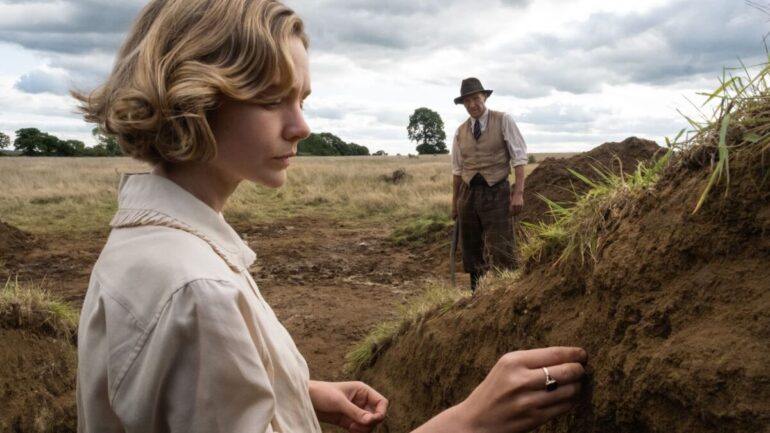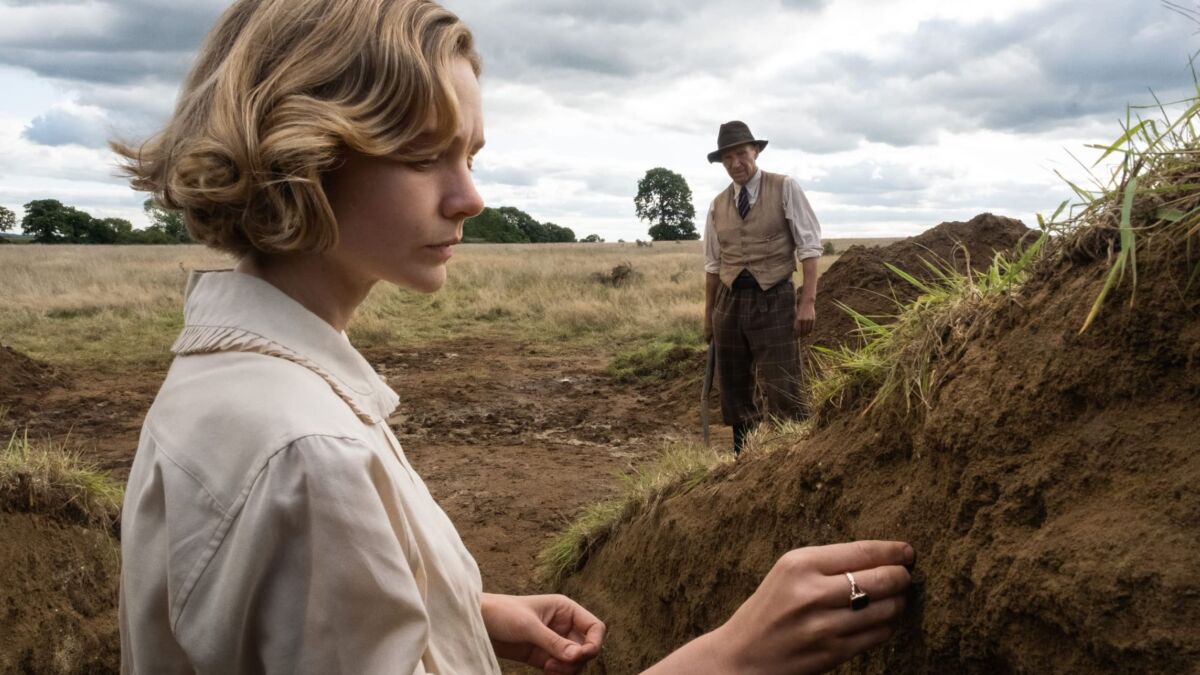Netflix’s The Dig, based on a 2007 novel of the same name by John Preston, is a meandering take on the real-life story of the 1939 Sutton Hoo excavation – an archaeological dig that led to the discovery of one of the most important Anglo-Saxon sites ever found.
On the eve of the Second World War, Edith Pretty (Carey Mulligan) hires Basil Brown (Ralph Fiennes) to excavate the burial mounds on her land in Suffolk. Brown is a self-taught archaeologist, but he quickly determines that one of the mounds contains the remains of an entire fifth century ship. The world of archaeology is a dog-eat-dog one, and Brown loses control of the site as others from the British Museum come to take over. Pretty doesn’t allow him to be muscled out entirely, but she is ill and getting sicker with every day that goes by. With the constant threat of war in the background, there is more than one race against time to get the treasure trove of items excavated.
If you come to The Dig expecting historical context, then you will probably be disappointed. There’s curiously little discussion about the “Anglo-Saxon” period. At one point, a tiny coin causes a stir as Brown and the British Museum’s Charles Phillips (Ken Stott) realise it is proof of the age of the ship and a hint at a more sophisticated culture than originally thought – but we don’t even see the coin in a shot of its own, or have the true significance of it revealed to the audience. I’m not suggesting lines of exposition, but Pretty and her young son, Robert (Archie Barnes) are right there and could easily have been told in a few words why the coin is important. There are other such missed opportunities.
I mentioned that the film is meandering, but in many cases, this isn’t a bad thing as the pace of the story gives director Simon Stone the time for lingering shots of the Suffolk countryside, and for the gazes of characters to linger on sights such as young soldiers building a wall of sandbags around statues in London. It also allows for some symbolically very beautiful moments to be given the screen time they deserve; when Brown and his fellow archaeologists recover the body of a pilot killed in a crash near the site, they lay him in the bottom of a boat, just as the owner of the burial mound would have been laid to rest in his, and even perhaps floated along the same river.
Perhaps the most disappointing thing about The Dig is that not nearly enough of the almost two hours running time is spent with Pretty, Brown and Robert. The love affair story with Lily James’ Peggy Piggott and Johnny Flynn’s Rory Lomax, which takes up a fair amount of the second half of the film is, frankly, not very interesting in comparison to the main story. It is played well enough by the two actors, but it feels like something we have seen on screen a million times.
On the other hand, the intense march of Pretty’s developing sickness is claustrophobic and relentless, the true ticking clock of the film as we all know that the looming war is already an inevitable conclusion. Mulligan is, predictably, excellent in the role as the mother struggling to keep it together for the son who has already lost his father, and as the landowner determined to fight in Brown’s corner and not allow the British Museum to take over on her own property.
These three characters are the heart of the story, and their scenes together are head and shoulders above the rest. Fiennes’ Brown is a deceptively simple, remarkably intelligent man, who has a strange but loving relationship with his wife, May (a really great Monica Dolan) and offers the kind of support that Pretty and Robert desperately need. Barnes, here with one of his earliest acting credits, more than holds his own with heavyweights Mulligan and Fiennes and – on several occasions – even outshines them.
The Dig invites its audience to consider the nature of time; how archaeology shows that we are all connected to one another, and how by accepting you are part of the cycle of life and death, you never really die. I only wish it had slightly more conviction in its own message, and allowed the characters who embodied it to stretch their wings a little further.
READ NEXT: 10 Upcoming New Netflix Movies To Watch in 2021
Some of the coverage you find on Cultured Vultures contains affiliate links, which provide us with small commissions based on purchases made from visiting our site. We cover gaming news, movie reviews, wrestling and much more.




